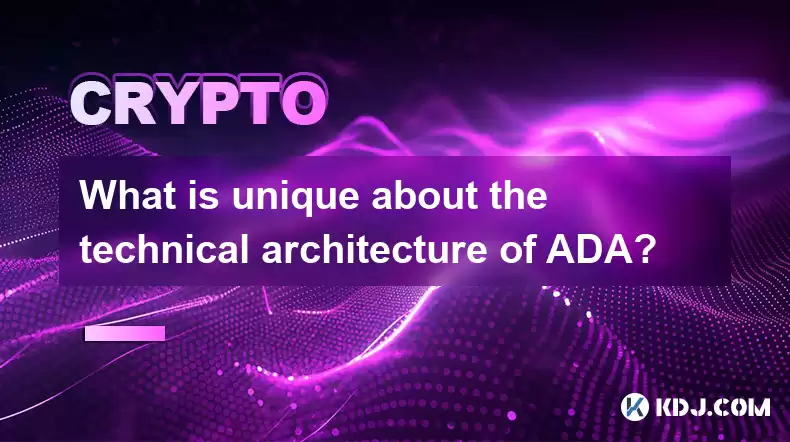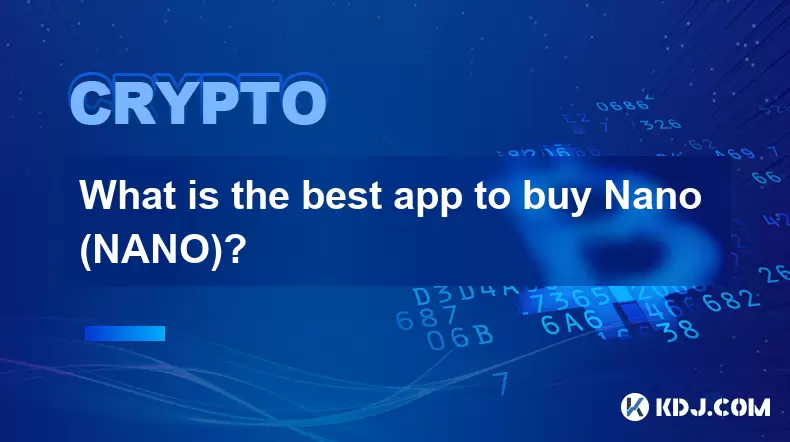-
 Bitcoin
Bitcoin $116600
0.11% -
 Ethereum
Ethereum $4235
4.72% -
 XRP
XRP $3.283
0.22% -
 Tether USDt
Tether USDt $1.000
0.00% -
 BNB
BNB $805.4
1.59% -
 Solana
Solana $181.8
2.27% -
 USDC
USDC $0.9998
-0.01% -
 Dogecoin
Dogecoin $0.2450
7.90% -
 TRON
TRON $0.3363
-0.80% -
 Cardano
Cardano $0.8161
2.85% -
 Hyperliquid
Hyperliquid $43.68
6.68% -
 Chainlink
Chainlink $21.20
8.50% -
 Stellar
Stellar $0.4526
0.64% -
 Sui
Sui $3.949
3.12% -
 Bitcoin Cash
Bitcoin Cash $571.3
-2.83% -
 Hedera
Hedera $0.2656
1.45% -
 Avalanche
Avalanche $24.41
3.14% -
 Ethena USDe
Ethena USDe $1.001
0.03% -
 Litecoin
Litecoin $122.0
-2.03% -
 Toncoin
Toncoin $3.425
1.51% -
 UNUS SED LEO
UNUS SED LEO $9.004
0.19% -
 Shiba Inu
Shiba Inu $0.00001381
4.36% -
 Uniswap
Uniswap $10.93
0.05% -
 Polkadot
Polkadot $4.117
3.93% -
 Dai
Dai $1.000
0.02% -
 Pepe
Pepe $0.00001235
3.53% -
 Bitget Token
Bitget Token $4.507
0.36% -
 Cronos
Cronos $0.1570
2.05% -
 Monero
Monero $274.9
0.14% -
 Ethena
Ethena $0.7511
15.68%
What is unique about the technical architecture of ADA?
Cardano's (ADA) unique architecture uses a layered design, Ouroboros (a secure, energy-efficient PoS consensus), Haskell (a formally verified language), and a rigorous, multi-stage development process for enhanced scalability, security, and maintainability.
Mar 04, 2025 at 04:54 pm

Key Points:
- Cardano's architecture distinguishes itself through its layered approach, separating concerns for scalability and security.
- Ouroboros, its proof-of-stake consensus mechanism, is mathematically proven secure and energy-efficient.
- The use of Haskell, a formally verified programming language, minimizes bugs and enhances code reliability.
- Its multi-stage development process prioritizes thorough peer review and rigorous testing before implementation.
- The modular design allows for future upgrades and integrations without disrupting the core functionality.
What is unique about the technical architecture of ADA?
Cardano's (ADA) technical architecture stands out in the cryptocurrency landscape due to its innovative and layered approach. Unlike many cryptocurrencies that integrate all functionalities into a single layer, Cardano separates its architecture into distinct layers, each responsible for specific functions. This layered design enhances scalability, security, and maintainability. The key differentiators are its layered architecture, the Ouroboros consensus mechanism, the use of Haskell programming language, and its rigorous development process.
The Layered Architecture:
Cardano's architecture is built upon several interconnected layers: the settlement layer, the consensus layer, and the computational layer. The settlement layer handles the actual transfer of ADA tokens, ensuring transaction integrity. The consensus layer, powered by Ouroboros, validates transactions and adds new blocks to the blockchain. Finally, the computational layer enables the execution of smart contracts and decentralized applications (dApps). This layered design allows for independent upgrades and improvements to each layer without compromising the stability of the others. This modularity is a key strength, allowing for future expansion and adaptability.
Ouroboros: A Secure and Efficient Consensus Mechanism:
Cardano utilizes Ouroboros, a groundbreaking proof-of-stake (PoS) consensus mechanism. Unlike the energy-intensive proof-of-work (PoW) used by Bitcoin, Ouroboros is significantly more environmentally friendly. Furthermore, Ouroboros has undergone rigorous mathematical analysis, providing a high degree of confidence in its security and resilience against attacks. Its design focuses on fairness, decentralization, and scalability, aiming to address the limitations of other PoS systems. The unique aspects of Ouroboros contribute significantly to Cardano's overall robustness.
Haskell: A Foundation of Formal Verification:
The choice of Haskell, a purely functional programming language, as the primary language for Cardano's development is a significant departure from the norm in the cryptocurrency world. Haskell's strong emphasis on formal verification allows for rigorous testing and validation of code, significantly reducing the risk of bugs and vulnerabilities. This rigorous approach to software engineering results in a more robust and secure platform compared to systems built with languages that lack such strong formal verification capabilities. The emphasis on correctness directly impacts the security and reliability of the entire Cardano network.
Rigorous Development Process:
Cardano's development follows a multi-stage process, emphasizing peer review and rigorous testing at each stage. This approach, known as the "scientific philosophy," ensures that every component of the system undergoes thorough scrutiny before implementation. This contrasts sharply with many projects that prioritize rapid development over thorough testing, potentially leading to vulnerabilities and security risks. The phased approach minimizes unforeseen issues and enhances the overall quality and stability of the Cardano blockchain.
Scalability and Future Upgrades:
Cardano's layered architecture and the Ouroboros consensus mechanism are designed to enhance scalability. The system can handle a large number of transactions without compromising speed or security. Moreover, the modular design facilitates future upgrades and the integration of new technologies. This allows Cardano to adapt to evolving needs and remain competitive in the ever-changing landscape of blockchain technology. The ongoing development and planned upgrades continuously improve the network's efficiency and functionality.
Frequently Asked Questions:
Q: How does Cardano's layered architecture improve scalability?
A: The layered architecture allows for independent scaling of different components. For instance, the computational layer can be upgraded to handle more transactions without affecting the security of the consensus layer.
Q: What are the advantages of Ouroboros over other PoS mechanisms?
A: Ouroboros offers a mathematically proven security model, is more energy-efficient than PoW, and aims for better decentralization and fairness.
Q: Why is Haskell important for Cardano's security?
A: Haskell's features allow for formal verification, reducing the likelihood of bugs and vulnerabilities, thus contributing to a more secure system.
Q: How does Cardano's multi-stage development process ensure quality?
A: The rigorous peer review and testing at each stage ensure that any potential issues are identified and addressed before deployment.
Q: What are the future plans for Cardano's development?
A: Future plans include ongoing improvements to scalability, the integration of new features, and the expansion of its decentralized application ecosystem. Specific details are regularly updated on the Cardano Foundation's official channels.
Disclaimer:info@kdj.com
The information provided is not trading advice. kdj.com does not assume any responsibility for any investments made based on the information provided in this article. Cryptocurrencies are highly volatile and it is highly recommended that you invest with caution after thorough research!
If you believe that the content used on this website infringes your copyright, please contact us immediately (info@kdj.com) and we will delete it promptly.
- Solana Meme Coin Presales: Hype or the Next Big Thing?
- 2025-08-10 02:50:12
- Pi Network, Altcoin Season, and Breakout Tokens: What's Hot in 2025?
- 2025-08-10 02:50:12
- Decoding Crypto Presales: Is Cold Wallet the New Neo Pepe?
- 2025-08-10 02:30:12
- Cryptos, 2025, Market Caps: Riding the Next Wave
- 2025-08-10 02:30:12
- Trump, Crypto Vehicle, and WLFI Tokens: A New York Minute on the Latest Buzz
- 2025-08-10 00:30:12
- Wheat Penny Fortune: Unearthing Valuable Coins in Your Pocket Change
- 2025-08-10 00:35:19
Related knowledge

How to purchase Aragon (ANT)?
Aug 09,2025 at 11:56pm
Understanding Aragon (ANT) and Its PurposeAragon (ANT) is a decentralized governance token that powers the Aragon Network, a platform built on the Eth...

Where can I buy UMA (UMA)?
Aug 07,2025 at 06:42pm
Understanding UMA and Its Role in Decentralized FinanceUMA (Universal Market Access) is an Ethereum-based decentralized finance (DeFi) protocol design...

How to buy Storj (STORJ) tokens?
Aug 09,2025 at 07:28am
Understanding Storj (STORJ) and Its Role in Decentralized StorageStorj is a decentralized cloud storage platform that leverages blockchain technology ...

What is the best app to buy Nano (NANO)?
Aug 09,2025 at 03:35am
Understanding Nano (NANO) and Its Unique FeaturesNano is a feeless, instant cryptocurrency designed for fast peer-to-peer transactions. Unlike many ot...

Where can I purchase Siacoin (SC)?
Aug 08,2025 at 11:14am
Understanding Siacoin (SC) and Its Role in the Sia NetworkSiacoin (SC) is the native cryptocurrency of the Sia decentralized cloud storage platform, a...

How to sell my Ontology (ONT) tokens?
Aug 09,2025 at 06:08pm
Understanding Ontology (ONT) and Its Trading EcosystemBefore selling your Ontology (ONT) tokens, it's essential to understand the nature of the crypto...

How to purchase Aragon (ANT)?
Aug 09,2025 at 11:56pm
Understanding Aragon (ANT) and Its PurposeAragon (ANT) is a decentralized governance token that powers the Aragon Network, a platform built on the Eth...

Where can I buy UMA (UMA)?
Aug 07,2025 at 06:42pm
Understanding UMA and Its Role in Decentralized FinanceUMA (Universal Market Access) is an Ethereum-based decentralized finance (DeFi) protocol design...

How to buy Storj (STORJ) tokens?
Aug 09,2025 at 07:28am
Understanding Storj (STORJ) and Its Role in Decentralized StorageStorj is a decentralized cloud storage platform that leverages blockchain technology ...

What is the best app to buy Nano (NANO)?
Aug 09,2025 at 03:35am
Understanding Nano (NANO) and Its Unique FeaturesNano is a feeless, instant cryptocurrency designed for fast peer-to-peer transactions. Unlike many ot...

Where can I purchase Siacoin (SC)?
Aug 08,2025 at 11:14am
Understanding Siacoin (SC) and Its Role in the Sia NetworkSiacoin (SC) is the native cryptocurrency of the Sia decentralized cloud storage platform, a...

How to sell my Ontology (ONT) tokens?
Aug 09,2025 at 06:08pm
Understanding Ontology (ONT) and Its Trading EcosystemBefore selling your Ontology (ONT) tokens, it's essential to understand the nature of the crypto...
See all articles

























































































